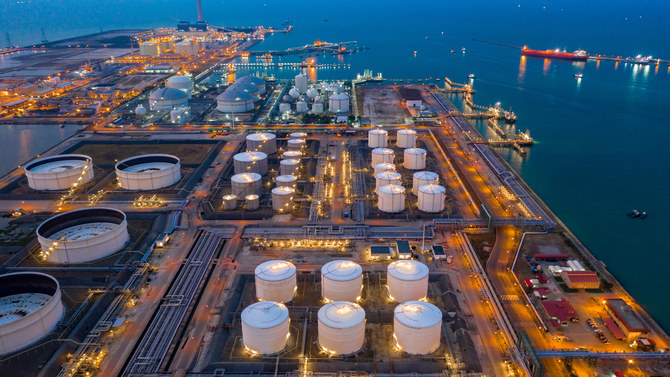Nigeria’s Oil Production Challenges and Response
Nigeria’s national oil company, NNPC Ltd, has declared a state of emergency in the oil and gas industry as Africa’s largest oil producer struggles to boost output. NNPC Group Chief Executive Officer, Mele Kyari, emphasized the urgent need for action to address the long-standing challenges plaguing the industry, including oil theft and pipeline vandalism. These issues have driven major players out of the country and often resulted in force majeure at key crude oil export terminals. Despite these setbacks, Nigeria aims to increase its crude production, which currently stands at around 1.5 million barrels per day (bpd), to 2 million bpd without deploying new rigs. This effort is part of a broader strategy to boost revenues and foreign exchange reserves.
Impact on Oil Prices and Market Dynamics
Oil prices have been influenced by various factors, including geopolitical tensions, economic data, and production adjustments by major oil producers. Recently, Brent crude futures edged up 14 cents to $86.38 per barrel, while U.S. West Texas Intermediate (WTI) crude futures gained 14 cents to $82.95. This rise followed a bigger-than-expected drawdown in U.S. crude stockpiles, which provided support amid broader economic headwinds from China and the eurozone.
Canadian Dollar and Oil Price Correlation
The Canadian dollar, often influenced by oil prices due to Canada's status as a net oil exporter, firmed up after a brief rally in oil prices. Despite a pullback in oil prices, the loonie held its gains, supported by a weaker U.S. dollar following dovish remarks from Federal Reserve Chairman Jerome Powell. Powell's comments suggested progress on inflation, increasing expectations for potential rate cuts later in the year. This, coupled with Canada's manufacturing sector data showing steady activity, contributed to the Canadian dollar's strength.
Saudi Arabia's Economic Diversification and Oil Production Strategy
Saudi Arabia has been actively working to diversify its economy away from oil dependence. The kingdom's non-oil economy grew by 3% in the second quarter of 2024, reflecting the government's efforts to boost non-oil revenues, which accounted for 50% of the budget in the previous year. Despite this progress, a 10.6% decline in oil activities due to production limits has impacted the overall GDP. Saudi Arabia continues to maintain oil production at 9 million bpd to manage global oil prices and support its economic strategy. Recent oil price increases, driven by geopolitical concerns and robust demand in the U.S., are still below the levels required by Riyadh to meet its budgetary needs.
U.S. Oil Production Adjustments and Market Implications
Rystad Energy's analysis highlighted a significant reduction in the forecast for U.S. oil production from August 2024 onwards, primarily due to decreased activity and consolidation in the Permian Basin. This reduction, averaging about 200,000 bpd from August 2024 through December 2025, is expected to support Brent prices and narrow the WTI-Brent spread. The decline in U.S. oil output, coupled with OPEC+ production cuts, suggests a tighter crude market, potentially driving prices higher.
Geopolitical and Macroeconomic Factors Influencing Oil Markets
Geopolitical tensions in the Middle East and the ongoing conflict in Ukraine continue to add a risk premium to oil prices. Recent reports indicate a decline in OPEC+ crude exports and a significant drop in Russia's seaborne crude flows, contributing to the tighter market. Additionally, macroeconomic factors such as U.S. inflation data and Federal Reserve policies play a crucial role in shaping market expectations. The Bureau of Economic Analysis reported that U.S. inflation, measured by the personal consumption expenditures (PCE) index, eased to 2.6% year-on-year in May, aligning with expectations and influencing the Fed's rate-setting decisions.
Market Sentiment and Future Outlook
Market sentiment remains cautiously optimistic, with expectations of robust demand, particularly in the U.S. during the summer travel season. The American Automobile Association forecasts a 5.2% increase in travel during the Independence Day holiday period compared to 2023. Analysts from J.P. Morgan project Brent oil to average $84 per barrel in the third quarter and potentially reach $90 by August/September, driven by a global oil liquids deficit and strong demand indicators.
Investment Opportunities and Risks
Despite the current market dynamics, investing in the oil sector presents both opportunities and risks. The strategic adjustments by major oil producers, geopolitical developments, and macroeconomic trends all play significant roles in shaping the investment landscape. Investors must consider these factors, along with the potential for further production cuts and market volatility, when making investment decisions.
Conclusion
The global oil market is navigating a complex landscape shaped by production adjustments, geopolitical tensions, and economic policies. As major oil producers like Nigeria and Saudi Arabia strive to manage their production and diversify their economies, the interplay of these factors will continue to influence oil prices and market sentiment. Investors should stay informed about these developments and consider the broader implications for the global energy market.
That's TradingNEWS




















